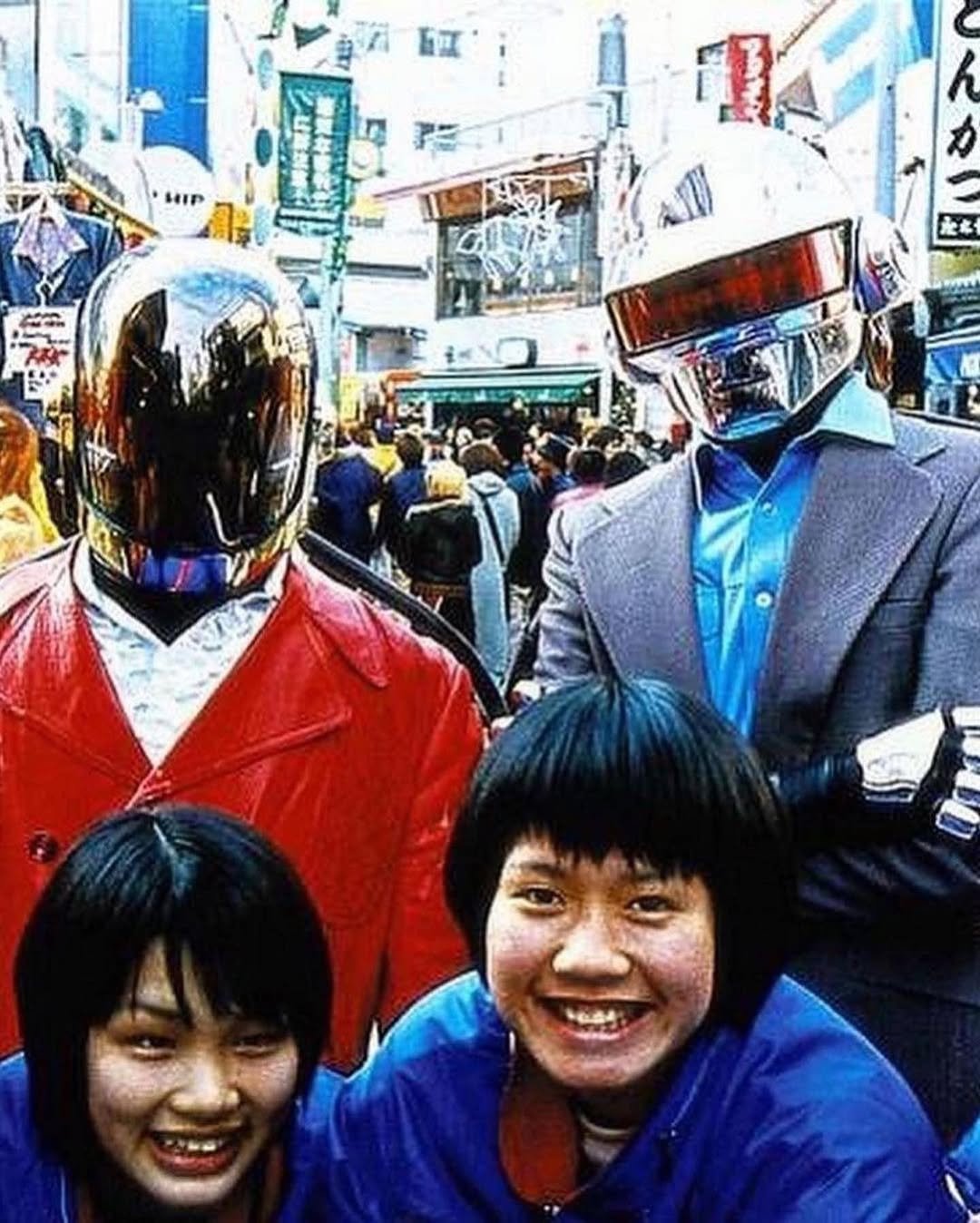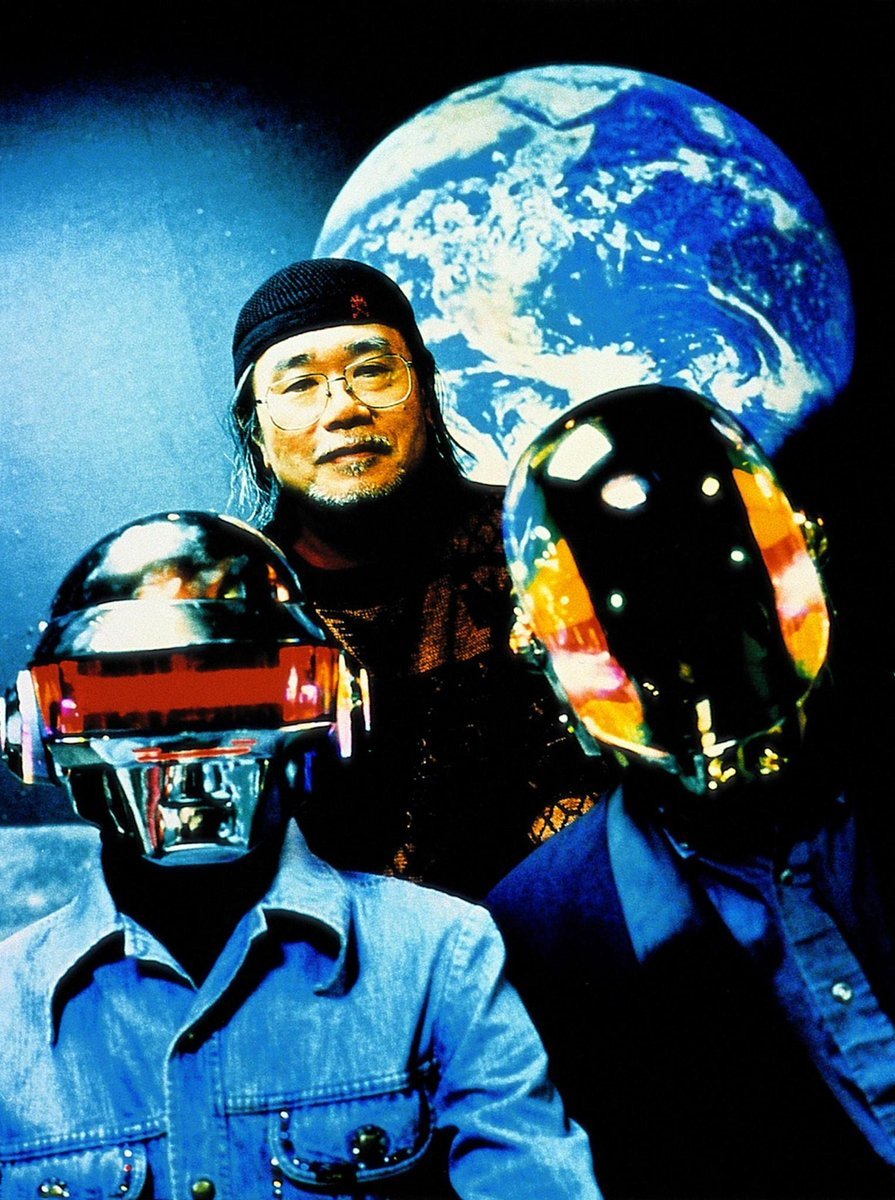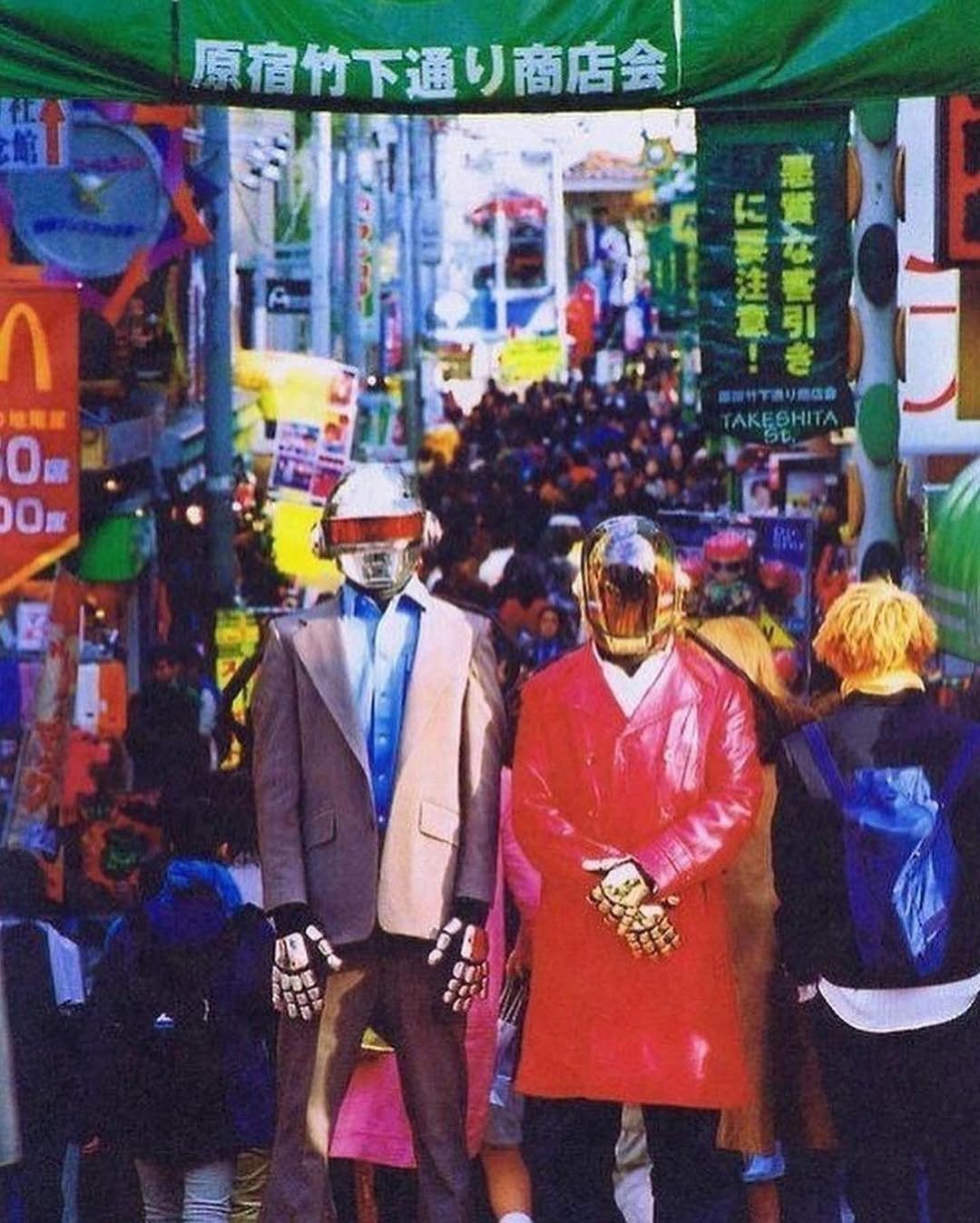Two Robots in Tokyo - Daft Punk’s Iconic Trip to Japan
Daft Punk in Tokyo│© Tetsuro Sato
It’s the year 2000. The world’s still buzzing from the Y2K scare, Napster is the king of digital music piracy, and two French men dressed as robots are about to cement their status as electronic music royalty. This is the story of Daft Punk in Japan.
Tokyo - The Perfect Playground
When Daft Punk landed in Japan in 2000, they were cultural icons in the making. Guy-Manuel de Homem-Christo and Thomas Bangalter had recently unleashed Homework (1997) on the world, an album that set clubs ablaze and reshaped the electronic music scene. However, Daft Punk’s fame in Japan didn’t come until the release of Discovery in 2001 and its 1-hour long anime film INTERSTELLA 5555. Meaning that the Japanese public had basically no clue why two dudes dressed as robots were strolling through the streets of Tokyo.
The duo was photographed by Tetsuro Sato in a series of images that became iconic for capturing the intersection of their robotic personas and the everyday chaos of Tokyo. The series debuted in Crossbeat magazine in March 2001. Tetsuro Sato, already known for his ability to capture the soul of a city, had found the perfect muses in Daft Punk.
Meeting a Manga Mastermind
While in Japan, Daft Punk did more than pose for photos. Enter Leiji Matsumoto, the legendary manga artist behind Galaxy Express 999 and Space Battleship Yamato. Matsumoto, renowned for his space-age storytelling, was both a childhood hero and a natural collaborator for the robotic duo.
Together, Daft Punk and Matsumoto worked on Interstella 5555: The 5tory of the 5ecret 5tar 5ystem. This animated sci-fi opera, set to the entirety of Daft Punk’s sophomore album Discovery (2001), was a love letter to Japanese anime and French electronic music. Toei Animation, the studio behind Dragon Ball and Sailor Moon, brought Matsumoto’s designs to life. The film premiered at Cannes in 2003.




The Legacy of 2000
The images by Tetsuro Sato, now considered iconic, continue to circulate among fans, are time capsules to a moment when Daft Punk was on the cusp of global superstardom. And while Daft Punk has since hung up their helmets, the echoes of their Japan odyssey still hum through pop culture. Interstella 5555 remains a masterpiece of cross-cultural collaboration, while Tetsuro Sato’s Tokyo photos continue to inspire. When two French robots roam the streets of Tokyo, something unforgettable is bound to happen.








Traditional hunters preserving nature and culture deep in Japan’s north.